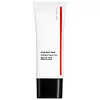What's inside
What's inside
 Key Ingredients
Key Ingredients

 Benefits
Benefits

 Concerns
Concerns

 Ingredients Side-by-side
Ingredients Side-by-side

Water
Skin ConditioningGlycerin
HumectantAlcohol Denat.
AntimicrobialDimethicone
EmollientAmmonium Polyacryloyldimethyl Taurate
Emulsion StabilisingSilica
AbrasivePhenoxyethanol
PreservativeCapryloyl Glycine
CleansingCetyl Dimethicone
EmollientCarbomer
Emulsion StabilisingSilica Silylate
EmollientBoron Nitride
AbsorbentCaprylyl Glycol
EmollientBis-PEG-18 Methyl Ether Dimethyl Silane
EmollientButylene Glycol
HumectantDimethicone/PEG-10/15 Crosspolymer
Cetearyl Alcohol
EmollientSodium Hydroxide
BufferingTrisodium Ethylenediamine Disuccinate
Totarol
AntioxidantAloe Barbadensis Leaf Juice Powder
Skin ConditioningGlyceryl Acrylate/Acrylic Acid Copolymer
HumectantCetearyl Glucoside
EmulsifyingDipropylene Glycol
HumectantZingiber Officinale Root Extract
MaskingSanguisorba Officinalis Root Extract
CleansingCinnamomum Cassia Bark Extract
MaskingSodium Citrate
BufferingCI 14700
Cosmetic ColorantTocopherol
AntioxidantWater, Glycerin, Alcohol Denat., Dimethicone, Ammonium Polyacryloyldimethyl Taurate, Silica, Phenoxyethanol, Capryloyl Glycine, Cetyl Dimethicone, Carbomer, Silica Silylate, Boron Nitride, Caprylyl Glycol, Bis-PEG-18 Methyl Ether Dimethyl Silane, Butylene Glycol, Dimethicone/PEG-10/15 Crosspolymer, Cetearyl Alcohol, Sodium Hydroxide, Trisodium Ethylenediamine Disuccinate, Totarol, Aloe Barbadensis Leaf Juice Powder, Glyceryl Acrylate/Acrylic Acid Copolymer, Cetearyl Glucoside, Dipropylene Glycol, Zingiber Officinale Root Extract, Sanguisorba Officinalis Root Extract, Cinnamomum Cassia Bark Extract, Sodium Citrate, CI 14700, Tocopherol
Water
Skin ConditioningMethyl Trimethicone
Skin ConditioningButylene Glycol
HumectantMethyl Methacrylate Crosspolymer
Dimethicone
EmollientPEG-10 Dimethicone
Skin ConditioningTriethylhexanoin
MaskingDiphenylsiloxy Phenyl Trimethicone
Skin ConditioningPolymethylsilsesquioxane
Caprylyl Methicone
Skin ConditioningTrifluoropropyldimethyl/Trimethylsiloxysilicate
EmollientCI 77120
Cosmetic ColorantSodium Chloride
MaskingDisteardimonium Hectorite
StabilisingPhenoxyethanol
PreservativeDisodium EDTA
Dipeptide-15
Skin ConditioningXanthan Gum
EmulsifyingChlorphenesin
AntimicrobialCellulose
AbsorbentCI 77891
Cosmetic ColorantMica
Cosmetic ColorantTocopherol
AntioxidantThymus Serpyllum Extract
Skin ConditioningDimethicone/PEG-10/15 Crosspolymer
Vinyl Dimethicone/Methicone Silsesquioxane Crosspolymer
Polyquaternium-51
Skin ConditioningStearic Acid
CleansingAluminum Hydroxide
EmollientZinc Oxide
Cosmetic ColorantHydrolyzed Conchiolin Protein
Skin ConditioningDimethicone/Vinyl Dimethicone Crosspolymer
Skin ConditioningAlumina
AbrasiveDipropylene Glycol
HumectantWater, Methyl Trimethicone, Butylene Glycol, Methyl Methacrylate Crosspolymer, Dimethicone, PEG-10 Dimethicone, Triethylhexanoin, Diphenylsiloxy Phenyl Trimethicone, Polymethylsilsesquioxane, Caprylyl Methicone, Trifluoropropyldimethyl/Trimethylsiloxysilicate, CI 77120, Sodium Chloride, Disteardimonium Hectorite, Phenoxyethanol, Disodium EDTA, Dipeptide-15, Xanthan Gum, Chlorphenesin, Cellulose, CI 77891, Mica, Tocopherol, Thymus Serpyllum Extract, Dimethicone/PEG-10/15 Crosspolymer, Vinyl Dimethicone/Methicone Silsesquioxane Crosspolymer, Polyquaternium-51, Stearic Acid, Aluminum Hydroxide, Zinc Oxide, Hydrolyzed Conchiolin Protein, Dimethicone/Vinyl Dimethicone Crosspolymer, Alumina, Dipropylene Glycol
Ingredients Explained
These ingredients are found in both products.
Ingredients higher up in an ingredient list are typically present in a larger amount.
Butylene Glycol (or BG) is used within cosmetic products for a few different reasons:
Overall, Butylene Glycol is a safe and well-rounded ingredient that works well with other ingredients.
Though this ingredient works well with most skin types, some people with sensitive skin may experience a reaction such as allergic rashes, closed comedones, or itchiness.
Learn more about Butylene GlycolDimethicone is a type of synthetic silicone created from natural materials such as quartz.
What it does:
Dimethicone comes in different viscosities:
Depending on the viscosity, dimethicone has different properties.
Ingredients lists don't always show which type is used, so we recommend reaching out to the brand if you have questions about the viscosity.
This ingredient is unlikely to cause irritation because it does not get absorbed into skin. However, people with silicone allergies should be careful about using this ingredient.
Note: Dimethicone may contribute to pilling. This is because it is not oil or water soluble, so pilling may occur when layered with products. When mixed with heavy oils in a formula, the outcome is also quite greasy.
Learn more about DimethiconeDimethicone/PEG-10/15 Crosspolymer is a type of silicone.
Dipropylene Glycol is a synthetically created humectant, stabilizer, and solvent.
This ingredient helps:
Dipropylene glycol is technically an alcohol, but it belongs to the glycol family (often considered part of the ‘good’ alcohols). This means it is hydrating and gentle on skin unlike drying solvent alcohols like denatured alcohol.
As a masking agent, Dipropylene Glycol can be used to cover the smell of other ingredients. However, it does not have a scent.
Studies show Dipropylene Glycol is considered safe to use in skincare.
Learn more about Dipropylene GlycolPhenoxyethanol is a preservative that has germicide, antimicrobial, and aromatic properties. Studies show that phenoxyethanol can prevent microbial growth. By itself, it has a scent that is similar to that of a rose.
It's often used in formulations along with Caprylyl Glycol to preserve the shelf life of products.
Tocopherol (also known as Vitamin E) is a common antioxidant used to help protect the skin from free-radicals and strengthen the skin barrier. It's also fat soluble - this means our skin is great at absorbing it.
Vitamin E also helps keep your natural skin lipids healthy. Your lipid skin barrier naturally consists of lipids, ceramides, and fatty acids. Vitamin E offers extra protection for your skin’s lipid barrier, keeping your skin healthy and nourished.
Another benefit is a bit of UV protection. Vitamin E helps reduce the damage caused by UVB rays. (It should not replace your sunscreen). Combining it with Vitamin C can decrease sunburned cells and hyperpigmentation after UV exposure.
You might have noticed Vitamin E + C often paired together. This is because it is great at stabilizing Vitamin C. Using the two together helps increase the effectiveness of both ingredients.
There are often claims that Vitamin E can reduce/prevent scarring, but these claims haven't been confirmed by scientific research.
Learn more about TocopherolWater. It's the most common cosmetic ingredient of all. You'll usually see it at the top of ingredient lists, meaning that it makes up the largest part of the product.
So why is it so popular? Water most often acts as a solvent - this means that it helps dissolve other ingredients into the formulation.
You'll also recognize water as that liquid we all need to stay alive. If you see this, drink a glass of water. Stay hydrated!
Learn more about Water